Vienna – Vienna Austriae
Detail
Date of first edition: 1617
Date of this edition: 1635, publisher Anton Hierat Jr.
Dimensions (not including margins): 34 x 49 cm
Dimensions (including margins): 41,5 x 55 cm
Condition: excellent. Sharp copper engraving printed on paper. Old coloured. Wide margins. Old repair at bottom verso.
Condition rating: A+
Map reference: Koeman B&H6 (21); Taschen, Br. Hog., 150; Van der Krogt 4,4817
From: Civitatis Urbis Terrarum (VI: Theatri praecipuarum Totius Mundi Urbium Liber Sextus Anno MDCXVII), first published 1617, this edition 1617, Köln. Koeman B&H6; Van der Krogt 4,41:1-3, page 21
In stock
Vienna commented by Braun
“But the city of Vienna is not only the capital of the whole noble country of Austria, but also a strong bulwark of all Christendom, situated at the confluence of the Wien River and the Danube. […] Little is known for certain about its beginnings. Many are of the opinion that Henry I, Duke of Austria, […] endowed the Abbey of the Scots and also laid the foundation stone of the splendid church of St Stephen, whose tower, however, was completed only in 1400. In the whole of Germany no other city can be compared with this one in respect of the handsomeness of its buildings and houses, the strength of its fortifications, walls and moats, and the wealth and abundance of its everyday life.”
Taschen
In the present plate, the 136-m-tall free-standing south tower of St Stephen’s cathedral is rising high above all other buildings. This 13th-century late Romanesque building was almost completely rebuilt in the Gothic style in the two succeeding centuries. On the left, next to the cathedral, is the Old Hofburg palace, residence of the kings and emperors of the Holy Roman Empire from 1438 onwards. In the second half of the 12th century Vienna developed into the residence of the Duchy of Austria and a city wall was built around it at the beginning of the 13th century. In 1221 Vienna was granted a municipal charter, the university was founded in 1365 and the city became an episcopal see in 1469. In the 15th century trade declined, but the city’s position as residence of the Holy Roman Empire was able to compensate the commercial losses. After the Siege of Vienna by the Ottoman army in 1529, the city’s fortifications were rebuilt. The new fortifications, highly praised by Braun, resisted another Turkish siege before the Battle of Vienna in 1683.
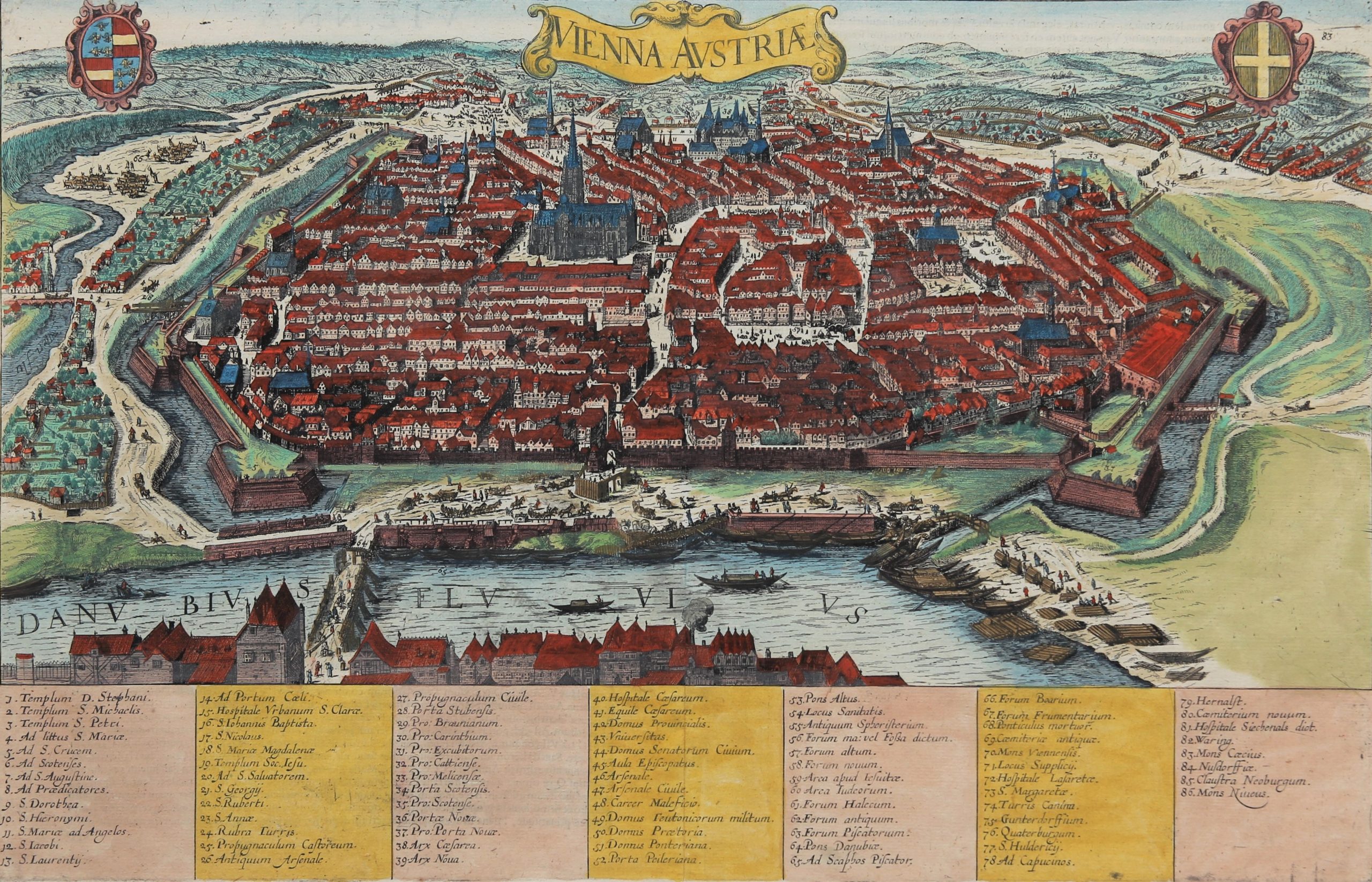

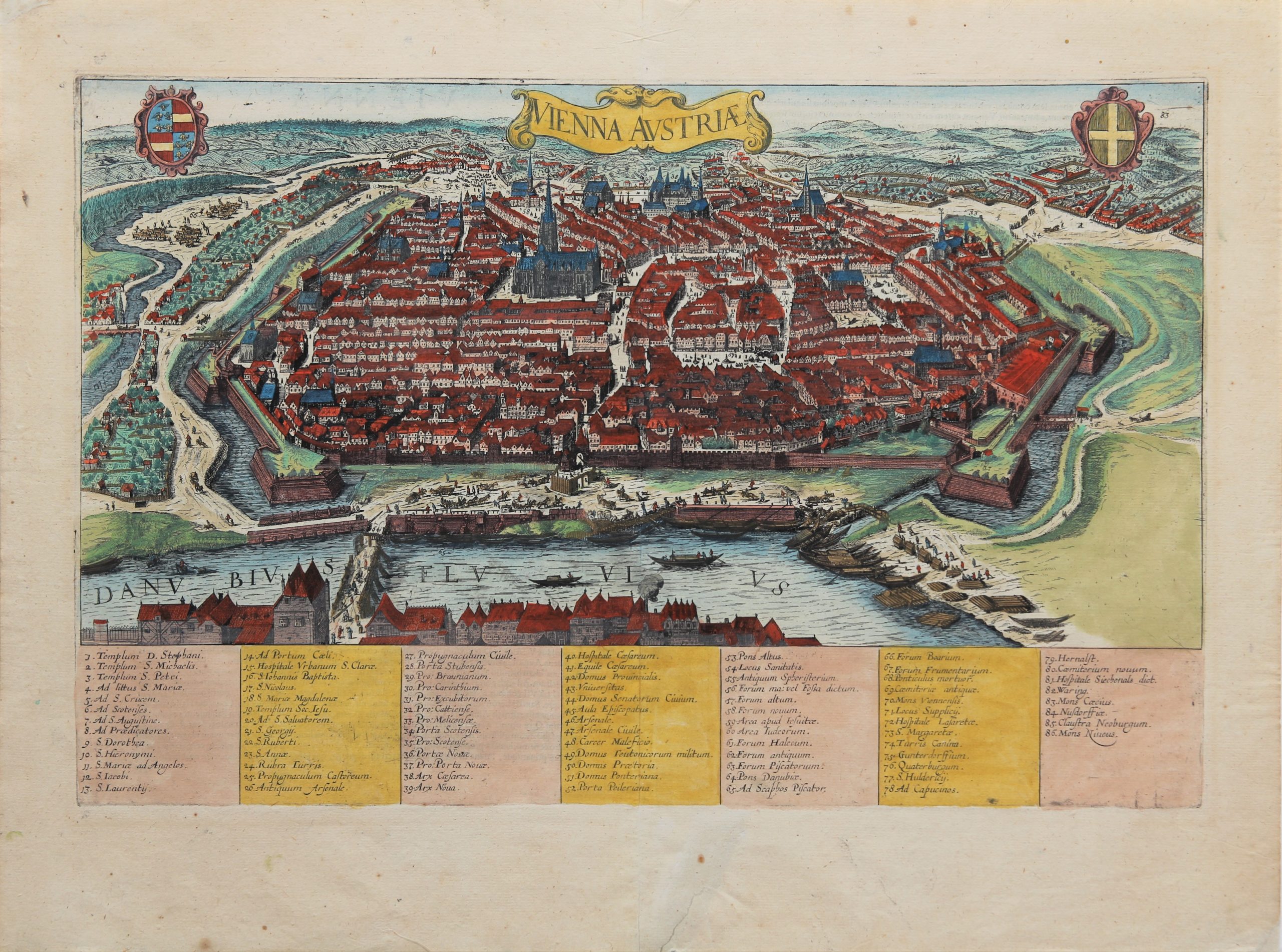
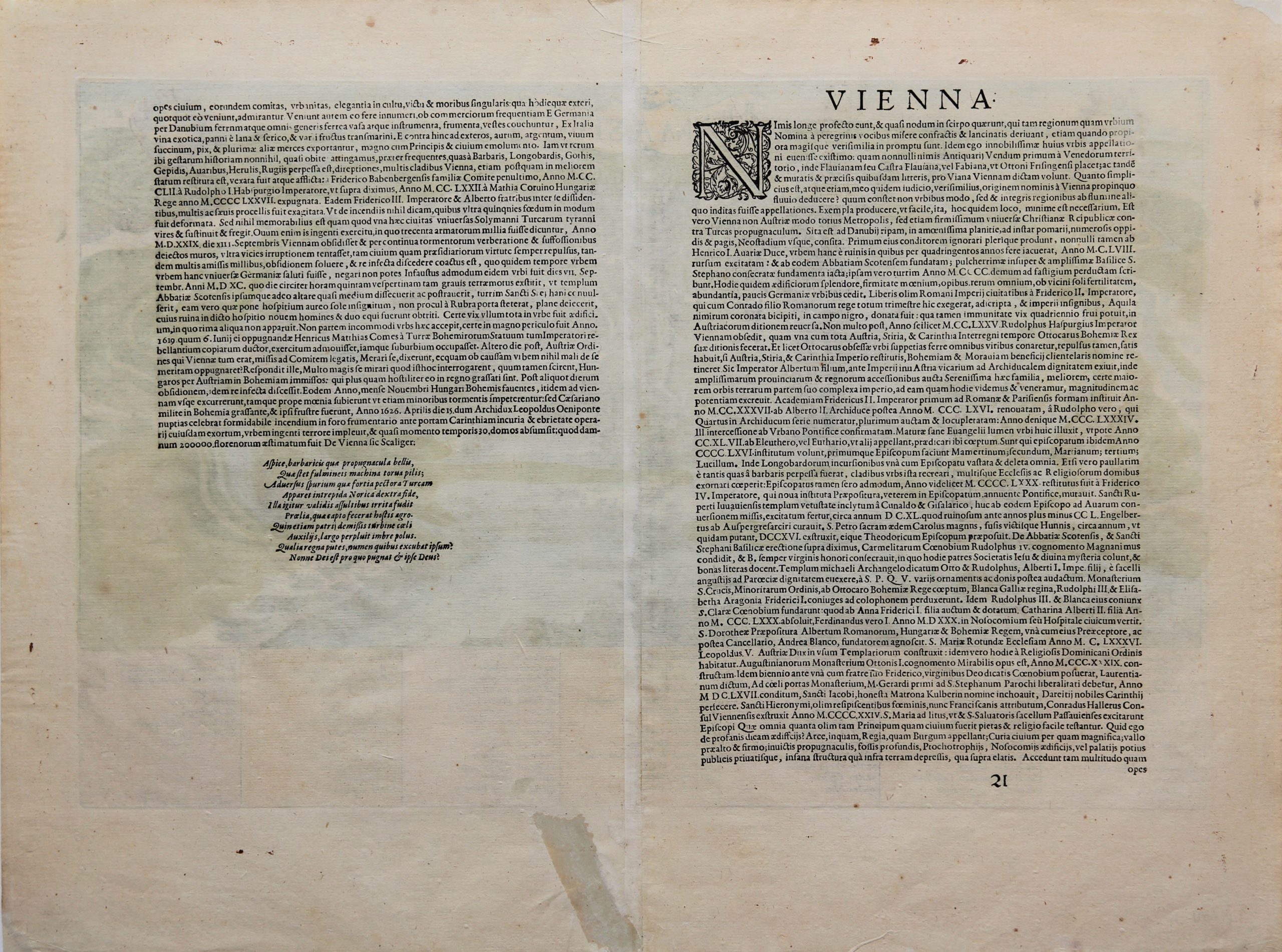
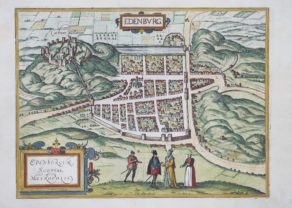
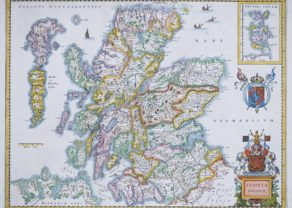
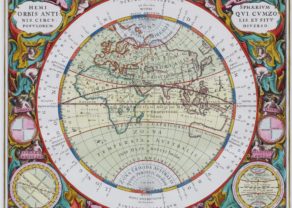
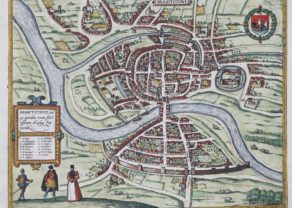
Vienna or past dominance over Europe
Central to this sight that is taken from the East Bank of the Danube, is St. Stephen’s Cathedral: its construction was already started in 1147, but somewhat later it was decided to rebuild it to a Gothic church. The tower was completed in 1433.
After the siege of Vienna by the Turks in 1529 the city wall was modernized again until 1547 so that it could withstand a second Turkish attack in 1683. The central part within walls is currently known as the Altstadt. At the very rear of the map the buildings of the Imperial Court are located. This would later become the Hofburg complex: its Baroque buildings still dominate the cultural heart of the city. Top left outside the city walls (number 66) is the Viennese pig market. Foundation of the University, the granting of city rights, the establishment of an Episcopal, respectively date from 1221, 1365 and 1469. This city sight shows Vienna at the time when Pieter Bruegel (1525-1569) lived in Flanders. Currently (and until January 13), the KHM in Vienna organizes a magnificent exhibition about this intriguing painter. Time for a city trip!l
The coat of arms at the top left is the one of the Habsburg dynasty (a family originating from Habsburg in Aargau, Switzerland; see picture). Around 1276 count Rudolf of Habsburg moved the family’s power base to Vienna when he acquired the duchies of Austria and Styria. The dynasty would exercise an enormous influence on European theater until 1918.
Top right is the coat of arms of Vienna. No “eagle” to be seen, which is explained by the fact that Vienna was never granted imperial privileges in contrast to other cities of the Holy Roman Empire.